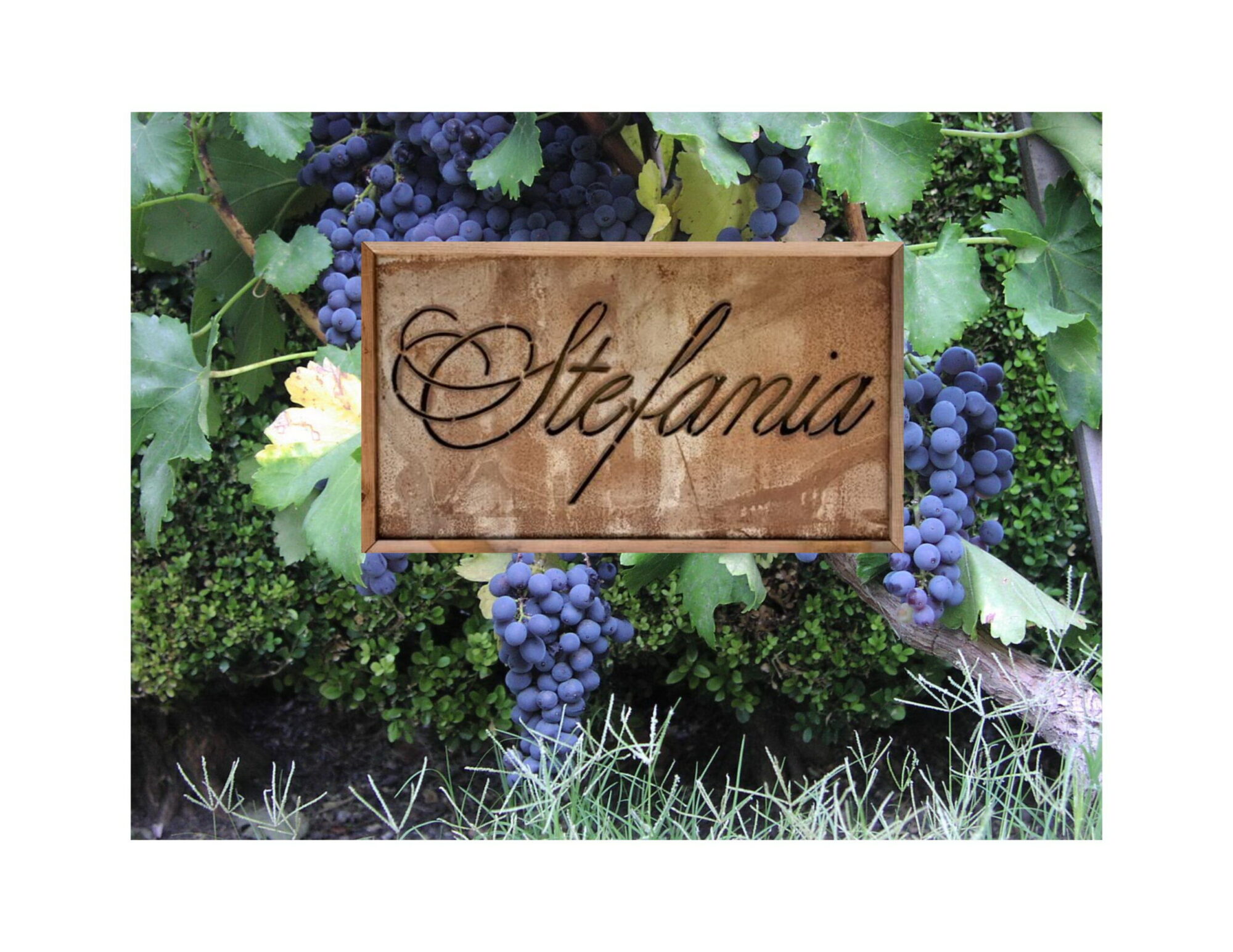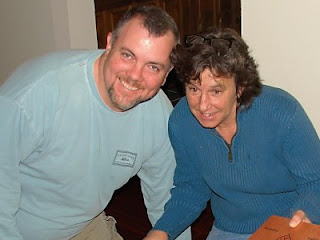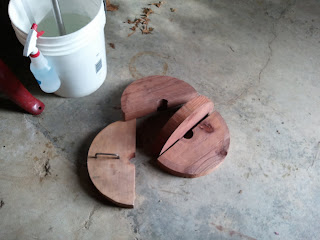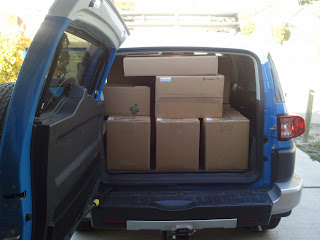Second in a series of three on our next releases….
In March of 2007 we received a call from a family looking for help in pruning a one acre vineyard. Usually we don’t do single task jobs like that, preferring to manage our vineyards through all parts of maintenance so we have control over final quality. The homeowner though was desperate. The vineyard had been installed in 2005 and had not been pruned at all in 2006. I knew that if it was not properly pruned in 2007, the entire vineyard would have to be started over from scratch and wouldn’t yield until 2010.
We went out with a small group of friends and spent two back breaking days of some of the hardest vineyard labor we’ve ever done. The plants had been left in grow tubes since planting in 2005. The plants were actually very healthy, but the grow tubes had limited the space the young vines could grow in. The result was that each plant had 8-20 stalks tightly wrapped like 5 inch thick rattan furniture.
We had to use large tree pruners to cut through the stalks until there was just one left. They were so thick and hard that our friend Kenneth and I were the only ones strong enough to cut away the stalks. Even then we had to do just 8-10 plants before talking a rest and letting the other person continue. Stefania led every one else on our pruning team. After we’d cut away the stalks and selected a new cordon the other pruners would debud the remaining stalk except for two buds that would become the new cordons. It was step, step lunge and repeat, 900 times.
That time in the vineyard though gave us a glimpse that this might be a very special place. The vineyard is located in a small valley between the Santa Teresa Foothills and the main Santa Cruz Mountains range. This particular vineyard is at the foot of ‘El Toro’ which is a 1200 foot high volcanic cinder cone. The small area around El Toro is the only place in the world to find Poppy Jasper which is formed when volcanic and seismic rocks are active in the same area.
This little valley has the most complex mix of soils we’ve ever seen, with the volcanic wash from El Toro combining with the lift thrust soils of the San Andreas fault. The weather also was near perfect. Fog rolled up into the vineyard every night from the Pacific to cool the vineyard, but burned off early in the morning leaving a warm sunny site during the day.

We decided to manage the vineyard through that summer and oversee its restoration. We decided to drop all the fruit in 2007 to allow the vines to build strength and fill out from our pruning efforts. By that Fall we were so confident in the vineyard’s potential that we informed Ted and Bill at Uvas Creek that 2007 would be the last vintage we’d be buying fruit from them. In 2008 this would become the source for our Santa Clara Valley offering. We were very excited to see how the complex soil and excellent weather would influence the finished wine.
Our first harvest from these four year old vines was on Sunday September 28th. The vineyard was under our second year of management. We dropped @ 600 pounds of fruit in late August to balance out the plants and insure even ripening and then began a system of reverse deficit irrigation to slow down sugar levels to allow the flavors to mature.
Final numbers came in very ripe but with good acidity. Something we would see all year in 2008. Brix was 27.2 and pH came in at 3.53.
Harvest was with a mix of paid and volunteer crews and we picked just under 3200 pounds. The grapes were small, and intensely flavored. We transported them to Big Basin Vineyards for processing, then sorted and 100% destemmed the grapes, but did not crush the berries, opting for whole berry fermentation. The must was foot treaded several times until fermentation started. We again used native yeast fermentation. Fermentation took 18 days to complete and the wine was gently pressed and transferred to 2 new Sequin Moreau barrels and one old French oak barrel for 67% new wood treatment. Malolactic fermentation was begun in bin and completed in barrel.
As the wine matured at Big Basin the winemaker there began to ask us if he too could get fruit from this vineyard site. His quote was: “This is the best Cabernet I’ve tasted from the Santa Cruz Mountains.” We racked the wine on a regular schedule over 22 months and it was transferred to Chaine d’Or for bottling in the summer of 2010. We bottled the wine in August 2010.
PS: That first day we arrived on site the vineyard was bright red from the Crimson Clover the homeowners had planted as a cover crop between the rows. We started referring to the site as ‘Crimson Clover’ right away.
Tasting Note: Bright and expressive on the nose with red fruit and spicy oak notes. A very complex wine with tons of red fruit flavors; berry, ripe cherry, raspberry with a coating of chocolaty mocha and spice. Darker fruit flavors come out as the wine opens up with blackberry, boysenberry, currant, and plum notes. There are just loads of fruit flavors in this wine that continue in the long finish. The wine is dense and well structured but the fruit flavors remain lifted and lively. I encourage people to try this wine young with a 60 minute decant. It will age well for 10+ years but I suspect people will have a hard time keeping their hands off this wine.
69 Cases Produced
Release: Spring of 2011
Release Price: $120 per 3 pack, $225 per six pack
 We have been able though to get the cordons and spurs trained properly as you can see below.
We have been able though to get the cordons and spurs trained properly as you can see below.






